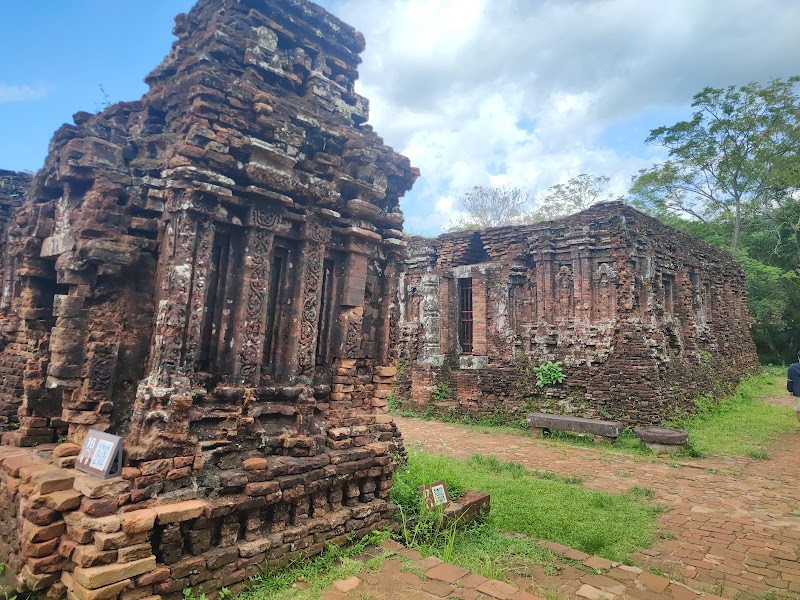
Lunar New Year Rhythms: Experiencing Local Celebrations in Tam Kỳ, Quảng Nam
Experience the authentic pulse of Lunar New Year in Tam Kỳ, Quảng Nam, where dragon dances, traditional markets, and ancestral rituals cross paths in a celebration rooted in local heritage. This guide offers insight into what to expect and how to navigate the festivities with practical tips for a rich, immersive visit.
Opt for Comfortable Walking Shoes
Tam Kỳ’s celebrations are best explored on foot through its compact streets, so wear sturdy, comfortable shoes to handle uneven pavements and long strolls.
Carry Local Currency
Many vendors prefer cash for quick purchases like snacks, offerings, or souvenirs during the festival; ATMs can be limited during holidays.
Layer Your Clothing
Daytime temperatures are mild, but evenings can be chilly; layers help you stay comfortable through the variety of microclimates in Tam Kỳ’s open areas and temples.
Stay Hydrated
Crowds and walking can quickly dehydrate you; carry a refillable water bottle and take advantage of local shops for water refills.
Lunar New Year Rhythms: Experiencing Local Celebrations in Tam Kỳ, Quảng Nam
Every Lunar New Year in Tam Kỳ, the city pulses with a distinct energy—raw, vivid, and deeply rooted in community traditions that honor the turning of the lunar calendar. Unlike the polished tourist events in bigger cities, Tam Kỳ’s celebrations offer an authentic encounter with Vietnam’s cultural heartbeat. Streets hum with the crackle of firecrackers daring the cold morning air, while dragon dances weave through crowded marketplaces, challenging the crowd’s rhythm with bursts of sharp, synchronized steps.
Local markets brim with orange blossoms and kumquats, their scents pushing through the swirl of incense and chatter. Vendors invite visitors to sample bánh chưng—sticky rice cakes wrapped in leafy green—slow-cooked over hours, grounding the festival in its culinary roots. The shrines, equal parts modest and majestic, stand as sentinels to ancestral spirits, their altars heavy with offerings, calling families together in shared reverence.
The heart of Tam Kỳ’s New Year celebration is more than spectacle—it’s an invitation to experience the rhythms of a community fiercely itself. The festivities stretch over days, giving you moments to wander through quiet temple courtyards and bustling streets alike, observing customs like “xông đất” where the first visitor after midnight is believed to set the tone for the year ahead.
For all adventurers, practical considerations come into play. The city’s compact layout means most celebrations unfold within a few kilometers, perfect for walking shoes rather than vehicles. Temperatures in late January or early February hover between 18-24°C but can drop sharply at night, so layering becomes a practical choice. Expect crowds, but also moments of calm—plan your route to hit early morning ceremonies and evening firework displays to capture a broad sensory experience. Staying hydrated and carrying small local currency for impromptu purchases will ensure smooth navigation of the festivities.
Being in Tam Kỳ for Lunar New Year is about being part of a living tradition, one that challenges you to move respectfully through its loops and leaps. Each colorful lion costume and each burst of firecracker smoke tells a story that’s been living on these streets for generations—a story inviting you not just to witness, but to connect.
Nearby Trips
All Adventures
Boat Charters
Water Activities
Adventures near Tam Kỳ, Quảng Nam
Discover the unique and memorable adventures that make Tam Kỳ, Quảng Nam special.
Frequently Asked Questions
What makes Tam Kỳ’s Lunar New Year celebrations different from larger cities like Hanoi or Ho Chi Minh City?
Tam Kỳ offers a more intimate and community-focused experience. The celebrations are less commercial and more tied to local traditions, including unique street rituals and family-centered shrine offerings that reflect the city’s cultural character.
Are there quieter times during the festival to visit temples in Tam Kỳ?
Early mornings, especially before 7 AM, tend to be less crowded in temples. Visiting then allows you to observe quieter rituals and appreciate the space's calm before the day's festivities surge.
Can I participate in traditional Lunar New Year activities as a visitor?
Yes, locals welcome respectful observation and sometimes participation in customs like giving lucky money (lì xì) or enjoying shared snacks. Always approach with politeness and an eagerness to learn.
What wildlife might I notice around Tam Kỳ during New Year celebrations?
While urban and busy, you may spot local birds like the green-backed bulbul or hear cicadas in quieter, green spots near the city outside the core festival zones.
Are there any environmental considerations I should keep in mind during the celebrations?
Firecracker use is traditional but can affect air quality temporarily. Dispose of litter responsibly, particularly around temples and marketplaces where plastic waste can accumulate.
What are some lesser-known viewpoints or spots to watch the Lunar New Year festivities in Tam Kỳ?
The elevated area near Sơn Mỹ Mountain offers panoramic views of Tam Kỳ’s fireworks. Additionally, quiet alleys off the main festival streets sometimes provide intimate glimpses of local rituals away from crowds.
Recommended Gear
Comfortable Walking Shoes
Support for navigating mixed pavement and avoiding fatigue during long strolls across crowded streets.
Light Jacket or Layered Clothing
Necessary to manage the sharp temperature drops after sunset.
Reusable Water Bottle
Essential to stay hydrated amid festival crowds and warm daytime weather.
Small Daypack
Useful for carrying water, purchases, and protective layers without weighing you down.
Local Insights
Hidden Gems
- "The traditional Tân An communal house which hosts smaller ancestral ceremonies"
- "Quiet flower markets that open early in the morning during the festival period"
Wildlife
- "Green-backed bulbul"
- "Local cicadas"
- "Urban house sparrows"
History
"Tam Kỳ has a history as a provincial market town, with Lunar New Year events evolving from agrarian community rituals and preserved through family-run celebrations and local temple customs."
